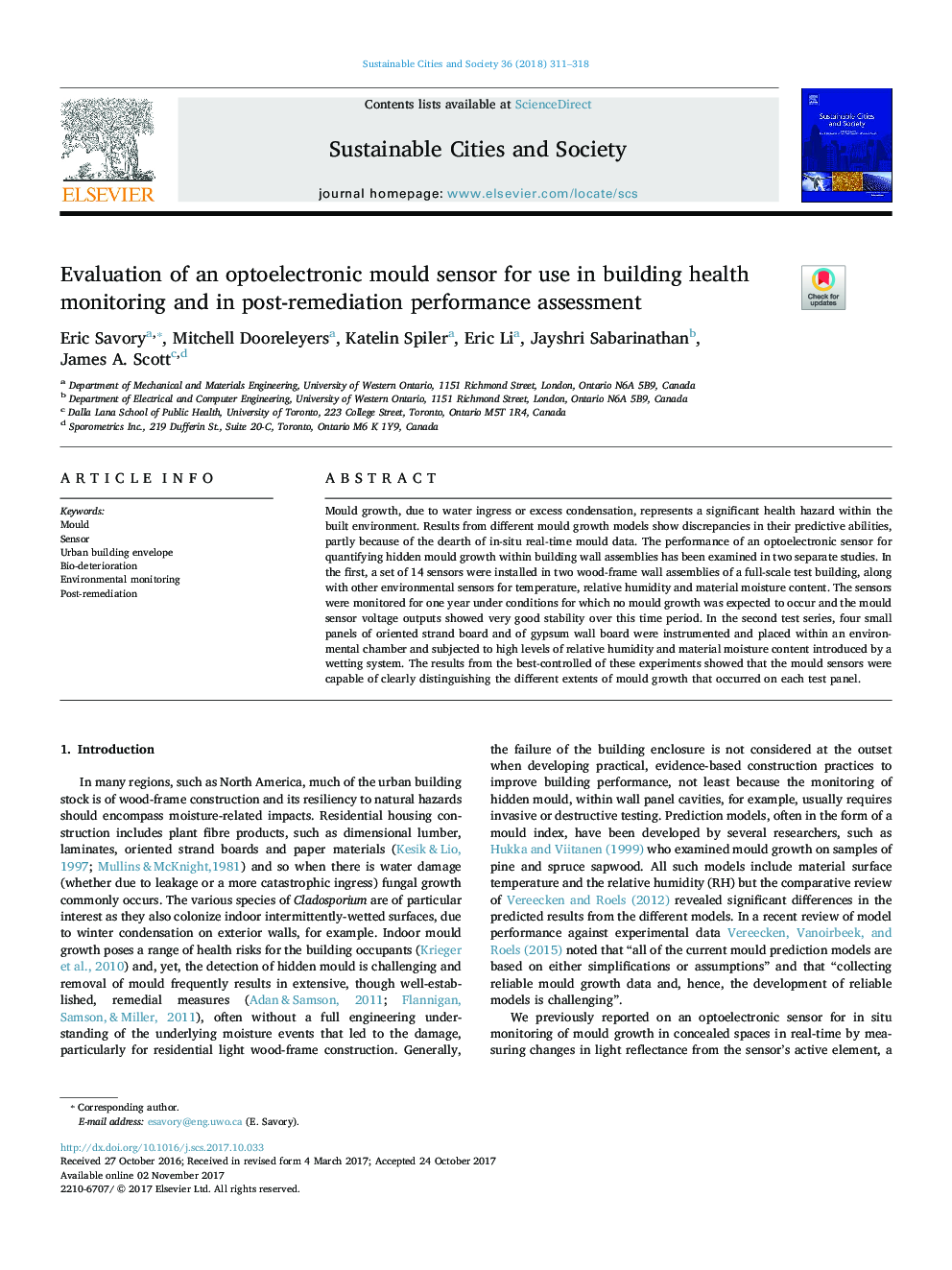| Article ID | Journal | Published Year | Pages | File Type |
|---|---|---|---|---|
| 6775711 | Sustainable Cities and Society | 2018 | 8 Pages |
Abstract
Mould growth, due to water ingress or excess condensation, represents a significant health hazard within the built environment. Results from different mould growth models show discrepancies in their predictive abilities, partly because of the dearth of in-situ real-time mould data. The performance of an optoelectronic sensor for quantifying hidden mould growth within building wall assemblies has been examined in two separate studies. In the first, a set of 14 sensors were installed in two wood-frame wall assemblies of a full-scale test building, along with other environmental sensors for temperature, relative humidity and material moisture content. The sensors were monitored for one year under conditions for which no mould growth was expected to occur and the mould sensor voltage outputs showed very good stability over this time period. In the second test series, four small panels of oriented strand board and of gypsum wall board were instrumented and placed within an environmental chamber and subjected to high levels of relative humidity and material moisture content introduced by a wetting system. The results from the best-controlled of these experiments showed that the mould sensors were capable of clearly distinguishing the different extents of mould growth that occurred on each test panel.
Keywords
Related Topics
Physical Sciences and Engineering
Energy
Renewable Energy, Sustainability and the Environment
Authors
Eric Savory, Mitchell Dooreleyers, Katelin Spiler, Eric Li, Jayshri Sabarinathan, James A. Scott,
